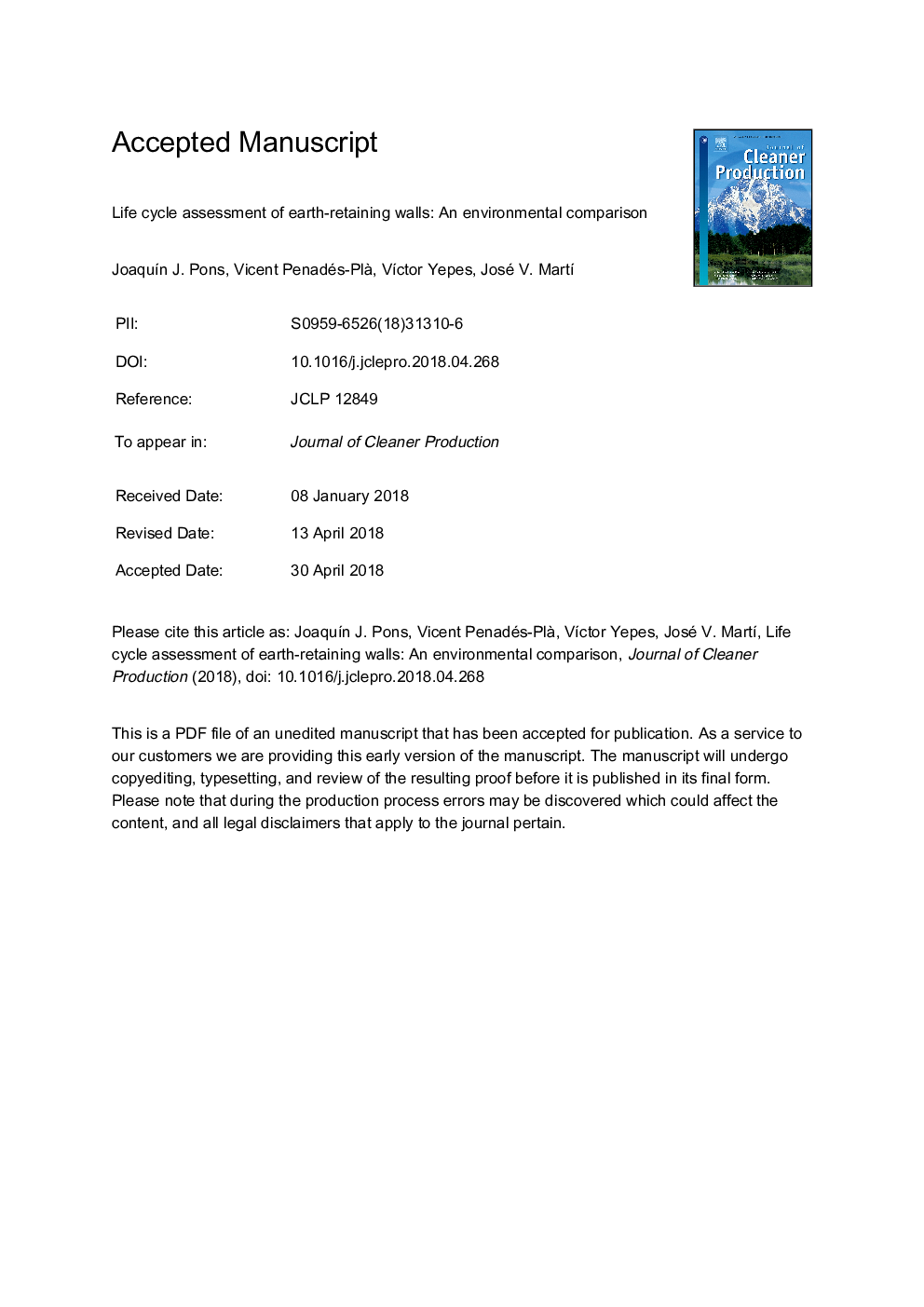| Article ID | Journal | Published Year | Pages | File Type |
|---|---|---|---|---|
| 8094575 | Journal of Cleaner Production | 2018 | 32 Pages |
Abstract
Earth-retaining walls are one of the most common structures in civil engineering, a discipline of the construction sector, which is known to produce one of the highest environmental impacts. Therefore, developing cleaner design and construction practices could contribute to a more sustainable future for our planet. To make a step towards this goal, this study comprises the life cycle assessment (LCA) of the four most common earth-retaining walls built between 1 and 6â¯m of height: cantilever walls, gravity walls, masonry walls and gabion walls to obtain the best solutions for the environment. To assess the environmental impacts caused throughout their whole life-cycle including the production, construction, use and end of life phases, we used the OpenLCA software, the ecoinvent 3.3 database and the ReCiPe (H) method. The associated uncertainties have been considered and the results are provided in both midpoint and endpoint approaches. Our findings show that gabion and masonry walls produce the lowest global impact. On the one hand, gabion walls cause less damage to human health but on the other hand, masonry walls cause less damage to the ecosystems. Furthermore, gravity walls produce similar impacts to gabion and masonry walls between 1 and 3â¯m of height as well as fewer impacts than cantilever walls for a height of 4â¯m. In conclusion, gabion and masonry walls are preferable to concrete walls for heights between 1 and 6â¯m and cantilever walls should be used over gravity walls for greater heights than 4.5â¯m.
Related Topics
Physical Sciences and Engineering
Energy
Renewable Energy, Sustainability and the Environment
Authors
JoaquÃn J. Pons, Vicent Penadés-Plà , VÃctor Yepes, José V. MartÃ,
